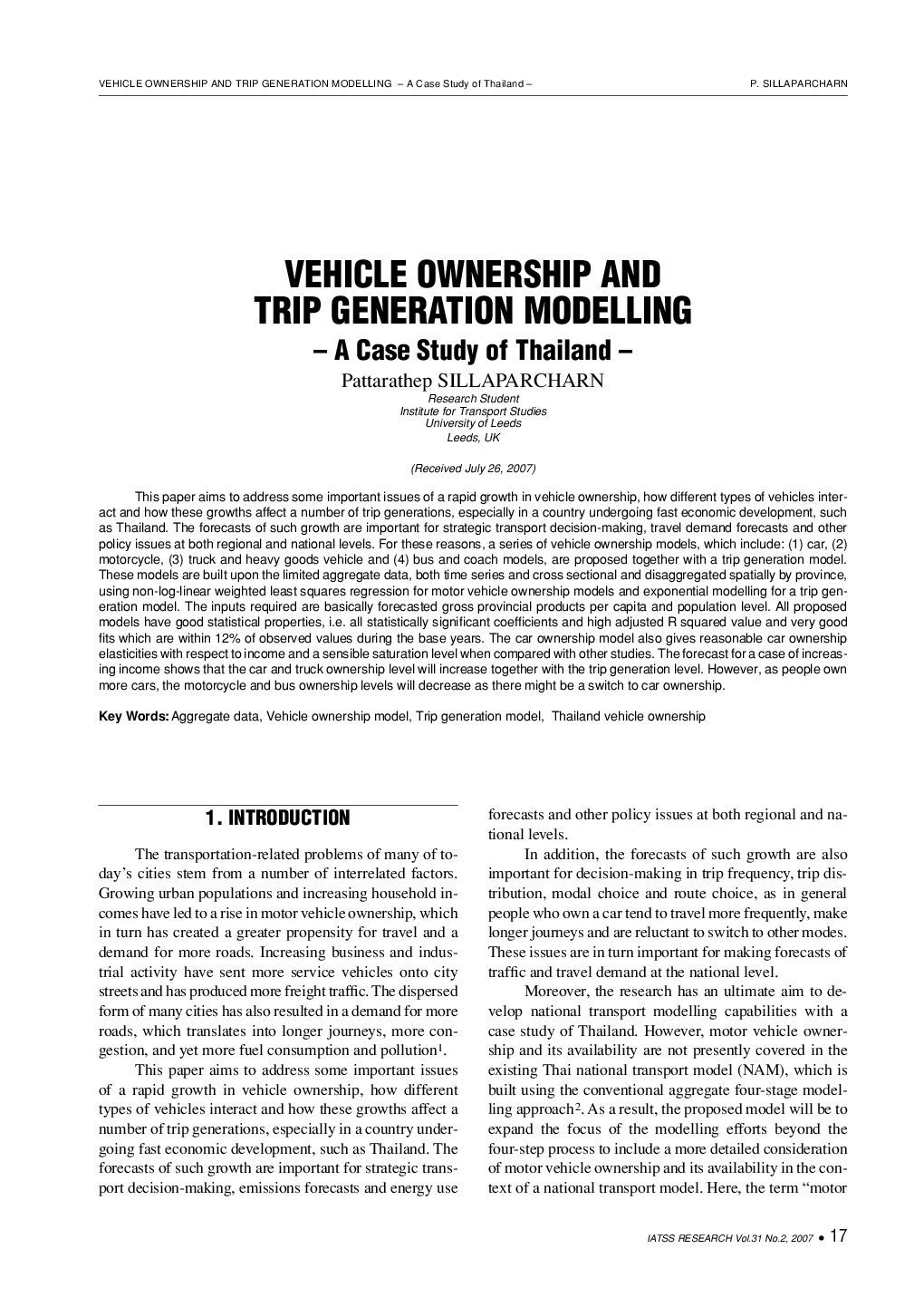| Article ID | Journal | Published Year | Pages | File Type |
|---|---|---|---|---|
| 1104772 | IATSS Research | 2007 | 10 Pages |
This paper aims to address some important issues of a rapid growth in vehicle ownership, how different types of vehicles interact and how these growths affect a number of trip generations, especially in a country undergoing fast economic development, such as Thailand. The forecasts of such growth are important for strategic transport decision-making, travel demand forecasts and other policy issues at both regional and national levels. For these reasons, a series of vehicle ownership models, which include: (1) car, (2) motorcycle, (3) truck and heavy goods vehicle and (4) bus and coach models, are proposed together with a trip generation model. These models are built upon the limited aggregate data, both time series and cross sectional and disaggregated spatially by province, using non-log-linear weighted least squares regression for motor vehicle ownership models and exponential modelling for a trip generation model. The inputs required are basically forecasted gross provincial products per capita and population level. All proposed models have good statistical properties, i.e. all statistically significant coefficients and high adjusted R squared value and very good fits which are within 12% of observed values during the base years. The car ownership model also gives reasonable car ownership elasticities with respect to income and a sensible saturation level when compared with other studies. The forecast for a case of increasing income shows that the car and truck ownership level will increase together with the trip generation level. However, as people own more cars, the motorcycle and bus ownership levels will decrease as there might be a switch to car ownership.
